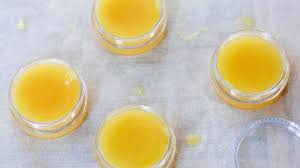Chamomile is an indispensable oil for the aromatherapist. Its powerful but gentle healing actions have been used for thousands of years and its sweet, herbaceous aroma is prized for its soothing, balancing and calming effects. It is a perfect partner for lavender and together they are an effective first aid treatment for burns, bruises, stings and sprains that is gentle enough to use on children. There are two varieties: Roman and German. The former has a sweeter scent and milder action, making it more suitable for children and skin allergies.
A Kind and Gentle Relief
Chamomile is a sedative for anxiety, tension and agitation, so it is invaluable for insomnia, tension headaches and nervous digestion. Its anti-spasmodic and analgesic properties provide relief from muscular aches and menstrual cramps. Chamomile soothes skin and is helpful for sore, dry skin allergies and inflamed conditions such as eczema. It encourages immunity by stimulating the production of white blood cells.
Active Ingredients of Chamomile Oil
The composition of chamomile oil is influenced by species and variety.
Chamazulene
This active ingredient is not present in the plant but is formed during the steam distillation process used to create the oil. It has calming an anti-inflammatory properties and is effective against bacteria.
Esters
Roman chamomile is rich in esters, which impart sedative qualities.
Sequisterpenes and Oxides
German chamomile, on the other hand, is rich in sequisterpenes, which are calming, and oxides.
Gentle Care for Damaged Skin
Cooling and healing, chamomile is the first choice for any skin irritation.
For sore chapped skin or rashes blend 4 drops of chamomile, 3 drops of geranium and 1 drop each of lavender and lemon with 20ml of sweet almond oil and 15ml of peachnut oil.
Make a simple balm for chapped lips by combining 2 drops each of geranium and chamomile in 15ml aloe vera gel.
Apply liberally and regularly.

Make a moisturiser for sensitive skin by adding 10 drops chamomile and 5 drops of rose to 50ml of sweet almond.
Chamomile Magic
Chamomile's properties have given it a place in folklore history since its discovery in ancient times.
- The Egyptians revered chamomile and dedicated it to the Sun, as it cured fevers, yet it is also seen as a Moon herb, because of its cooling properties.
- In the Victorian language of flowers, chamomile is for patient in adversity.
- In the tales of Beatrix Potter, Peter Rabbit was served chamomile tea by his mother to quieten him before bed.
- The proverb "like a chamomile bed, the more it is trod, the more it will spread" is taken to mean that people, like chamomile, thrive in adversity.
- In 19th century England, school were closed for 'chamomile season'. Women and children of the villages would gather chamomile in exchange for a year's rent on their cottages.
Soothe a Nervous Mind and Body
Chamomile's sedative action helps ease anxiety and tension, bringing relaxation.
Tension headaches
Massage the temples and hairline with:
- 2 drops lavender
- 2 drops chamomile
- 1 teaspoon carrier oil

A Restful Nights Sleep
Calm your mind in the evening for a restful night's sleep by adding a few drops of chamomile oil to a cotton wool pad and placing it under your pillow or in a pyjama pocket.
Gentle Touch for Babies
Chamomile oil is mild enough to use for pain relief for even the smallest of babies.
For Teething
for fretful, teething babies, blend:
- 2 drops chamomile
- 15ml aloe vera gel
Use to massage the jaw and neck area.
For Nappy Rash
Soothe nappy rash by adding 1 drop each of chamomile and lavender oils to a bowl of tepid water. Use to dampen cotton wool and wash the infected area.